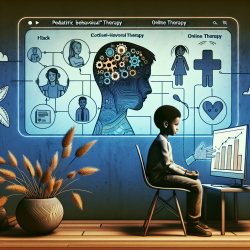Introduction
In the realm of pediatric anxiety treatment, the Child/Adolescent Anxiety Multimodal Study (CAMS) stands as a beacon of rigorous research and practical application. This landmark study, funded by the National Institutes of Mental Health (NIMH), meticulously evaluated the efficacy of cognitive-behavioral therapy (CBT), sertraline (SRT), and their combination (COMB) against a placebo in treating separation anxiety disorder (SAD), generalized anxiety disorder (GAD), and social phobia (SoP) in children and adolescents.
Key Findings
The CAMS trial involved 488 participants aged 7-17 years, randomly assigned to one of four treatment conditions. The results were illuminating:
- Combination Therapy (COMB): 80.7% of participants were rated as treatment responders, significantly outperforming CBT alone (59.7%) and SRT alone (54.9%).
- CBT and SRT: Both were superior to placebo but not statistically different from each other.
These findings underscore the enhanced efficacy of combining CBT with SRT, providing a compelling case for integrated treatment approaches.
Implications for Practitioners
For practitioners, the CAMS study offers several actionable insights:
- Adopt Evidence-Based Practices: The study validates the use of CBT and SRT as effective treatments for pediatric anxiety. Practitioners should consider these therapies as first-line treatments.
- Embrace Combination Therapy: Given the superior outcomes of COMB, integrating CBT with pharmacotherapy can be particularly beneficial for patients with severe anxiety symptoms.
- Utilize Data-Driven Decisions: The CAMS trial exemplifies the importance of data in guiding treatment decisions. Practitioners are encouraged to leverage research findings to tailor interventions to individual patient needs.
Encouraging Further Research
While CAMS provides robust evidence, it also highlights areas for further exploration:
- Long-Term Efficacy: Future studies could investigate the long-term benefits and safety of combination therapies.
- Personalized Treatment: Research into patient-specific factors that predict treatment response can enhance personalized care.
- Technology Integration: Exploring how online therapy platforms, like those provided by TinyEYE, can deliver these evidence-based treatments effectively.
Conclusion
The CAMS study is a testament to the power of rigorous, data-driven research in transforming clinical practice. By integrating its findings into everyday practice, practitioners can significantly improve outcomes for children and adolescents with anxiety disorders. To delve deeper into the original research, please follow this link: Child/Adolescent Anxiety Multimodal Study (CAMS): rationale, design, and methods.










